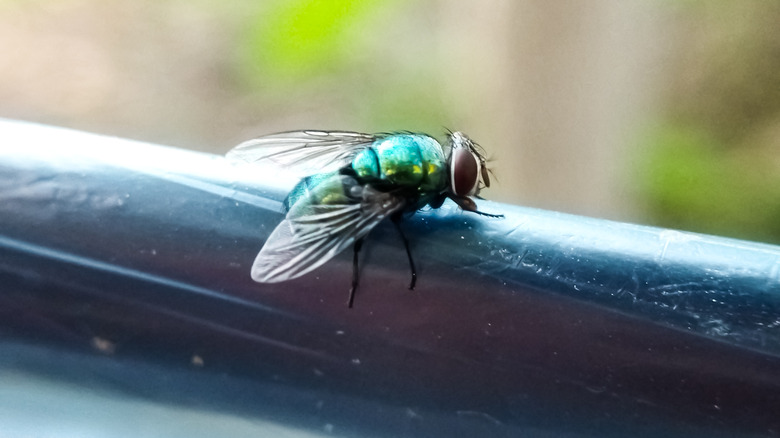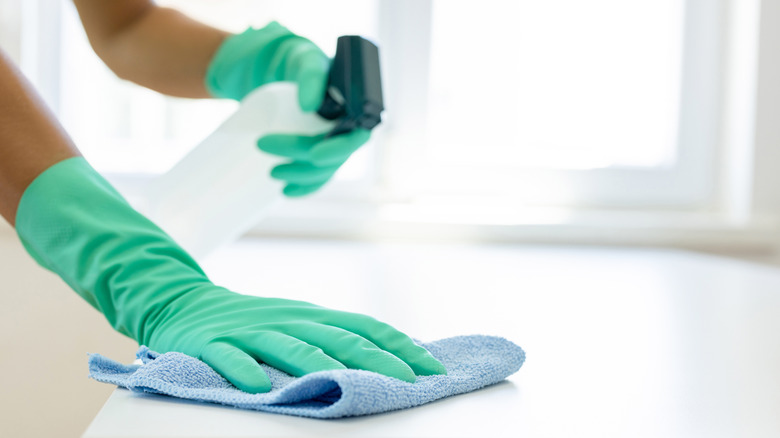The Cleaning Mistake That's Inviting More Flies Into Your Home
Pests aren't just a concern to be managed in your garden. When it's hot, especially during late summer and fall, flies will be looking for shelter from the coming cold weather. Only a handful of the thousands of fly species on Earth will be found around your house, including the aptly named house flies and blow flies. They are largely attracted to animal waste and decay, which is why you're more likely to find outbreaks of pests like fruit flies in your garbage cans during summertime. Flies are more of a nuisance than any real threat to your safety, but their filthy upbringings mean flies could carry diseases like dysentery and cholera that get spit up wherever they rest — including onto your food. If you're trying to get rid of flies that have started invading your home during the winter, one mistake you want to avoid is not cleaning the areas where they've been previously smashed.
As mentioned, flies are attracted to waste and decay; this naturally includes the decay of other flies. Active fly traps will pull in more flies over time as the amount of caught pests snowballs, which is useful so long as you have more sticky surfaces to hold them. However, the same can be said of your living room wall, or your kitchen countertop, or anywhere you've succeeded in swatting a fly. House flies excrete a sexual pheromone called muscalure that attracts other flies, and this will linger where a fly has been squished. Just picking up the body with a paper towel isn't enough to deter the appearance of more flies.
How to disinfect common fly gathering places
Properly cleaning a hard surface wherein flies have recently been killed is easy enough if you scrub with soap and water — or a DIY cleaning product made with ingredients like vinegar. If you're really concerned about lingering house flies, sanitizing with weak bleach solutions or EPA-recognized products will also be effective (though this is less necessary with regular cleaning). If you manage to catch flies on a softer surface, cleaning does become more involved; your drapes may need to be laundered and dried out, for example, and carpets should be vacuumed. Flies most often lay eggs in decaying matter, which can hatch into maggots in as little as 7 hours if temperatures are hot, but it's worth being cautious and cleaning out your carpet or rugs to make sure no eggs are lingering.
Ultimately, swatting flies won't be the most effective way of clearing out an infestation. It's best to manage and suppress fly populations while they're still larvae, which means not letting foodstuffs and other organic material accumulate in areas like your kitchen trash. Also check your pantry for leaking potatoes or onions, and flies might hole up in your sink's drain and garbage disposal — which you can handle with scalding water. Your trash cans should be cleaned weekly, with tight-fitting lids and bags that reduce odor. However, be sure to avoid rinsing infested garbage water directly into the soil, as larvae can thrive and reproduce there. Sanitizing these surfaces alongside any areas with recently smashed fly carcasses should keep flies away longer.

